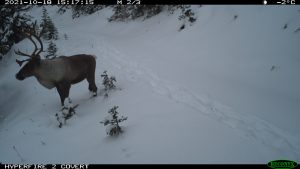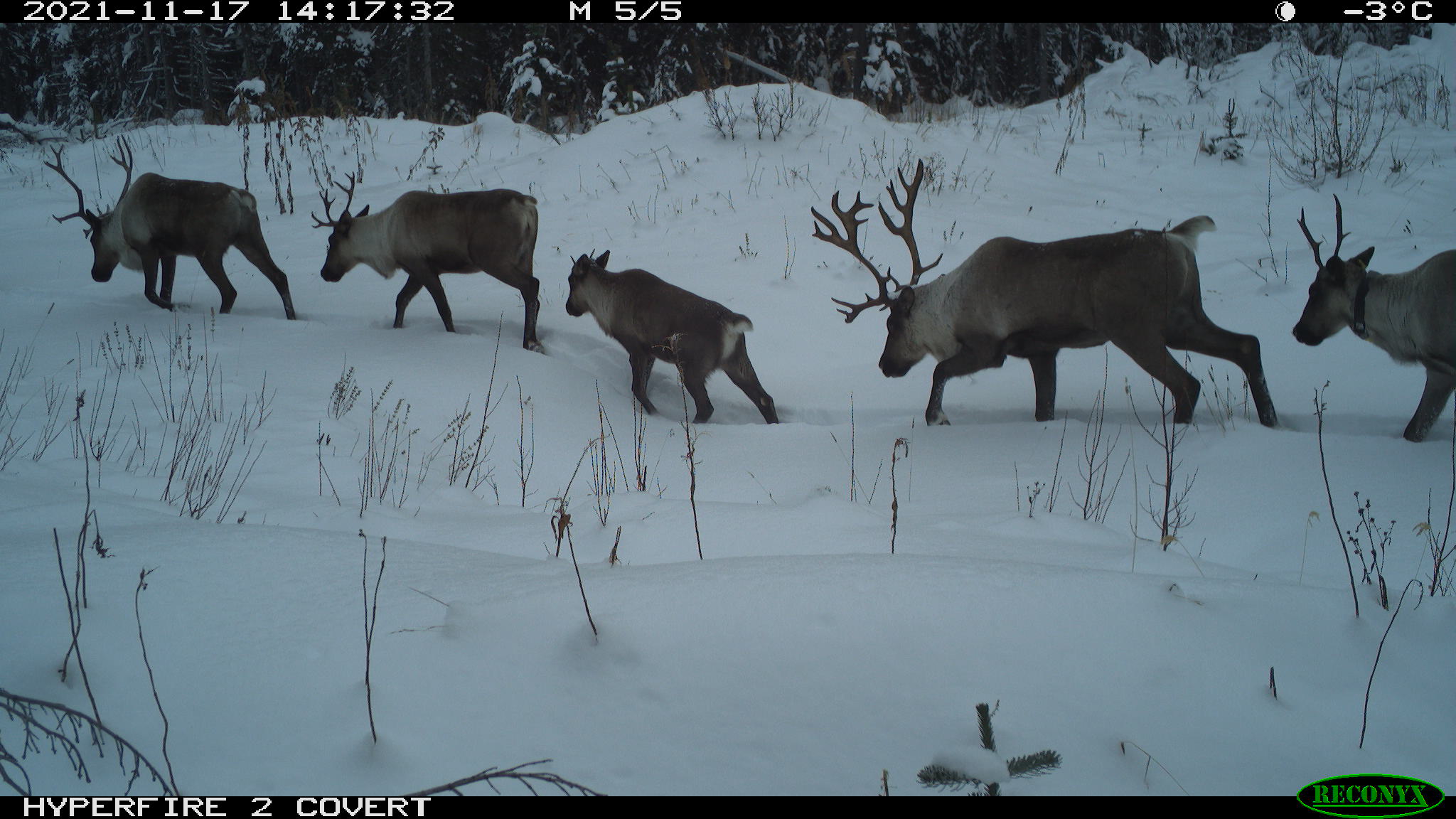Directly east of Tweedsmuir Park, there is an area caribou utilize as their core low-elevation winter habitat and as a migration route between winter and summer habitat. It is currently heavily impacted by human-caused disturbance such as forest harvesting and associated roads. The BC Ministries of Water, Land and Resource Stewardship and of Forests have been working on a project that aims to benefit the Tweedsmuir-Entiako caribou (TEC) herd through restoration of linear disturbances in the Chelaslie migration corridor (CMC). The project includes many partners, including Cheslatta Carrier Nation and the Society for Ecosystem Restoration in Northern BC (SERN BC), working on the restoration of roads and fire guards that are no longer required. Over the 2021 and 2022 seasons, ecological and functional restoration treatments were applied to over 54 km of road and fire guard. An additional 22 km of road has been effectively deactivated through the treatment of access roads. Restoration efforts will continue in 2023, through machine work on legacy roads, planting of roads and wildfire guard, and monitoring.
Restoration activities incorporate ecological restoration, which includes site preparation and conifer planting to recover habitat suitable for caribou; and, functional restoration, which includes activities such as woody debris spread, tree felling, mounding, and berm creation. These barriers are intended to reduce line of sight and make roads more difficult to travel along, which is important to eliminate human access and reduce predator mobility. The project utilized vegetation surveys, assessments for mobility, trail cameras, drone imagery, and GPS collars to monitor the short- and long-term outcomes of restoration treatments on access, vegetation, caribou use, and use by other wildlife.

Reconyx photo of caribou bull on road 1A (treated in 2022)
Anne-Marie Roberts, Tweedsmuir Caribou Herd Program lead with the BC Ministry of Water, Lands and Resource Stewardship (WLRS) and Joanna Lee, BC Conservation Foundation (BCCF) contractor with WLRS share some lessons learned on the project so far.
Review of work to date: During the first year, the project was scoped out based on previous work and from projects in other areas of British Columbia and Western Canada. This allowed for beneficial streamlining of some of the work around restoration treatments and implementation development. Learnings from the initial year of the project also helped scope subsequent workplans, training, and reporting.
On Site Discussion: While this project utilized an experienced Project/Site manager on the machine work, a team site visit was held early before the machine work began to review implementation. Representatives from the BC Ministry of Water, Land and Resource Stewardship (Nadina Forest District + Skeena Region), Forest Carbon Initiative, Cheslatta Carrier Nation, and HCTF were in attendance and visited roads completed in previous years as well as roads to be completed in 2022 and had in-depth on-site discussions about restoration treatments and goals. This was an effective use of time to ensure that prescriptions were communicated and understood well by all involved. It also resulted in a better understanding from the machine operators that were newer to this type of project to know what the project was intending to achieve (i.e., plant-able spots, functional treatments aimed to reduce sightlines and minimize access and ease of movement).
Remote Cameras: On a more logistical note, cameras deployed in remote areas were a significant investment in time and money to deploy, check and process. Ensuring that cameras are protected as much as possible (bear boxes and possibly locks) is important to protecting the investment in that data.
Partners and Stakeholders: Working with First Nations and stakeholders is unique to each region and caribou herd, and it is essential to include inputs from different groups to this type of project. Adequate time must be set aside for meaningful input and to develop real partnerships for ongoing restoration. This will be important in the long-term implementation of restoration treatments. Through deep commitment to working together there has been significant contribution from First Nation partners to this project, caribou recovery, and in building capacity to support and lead components of this work.






